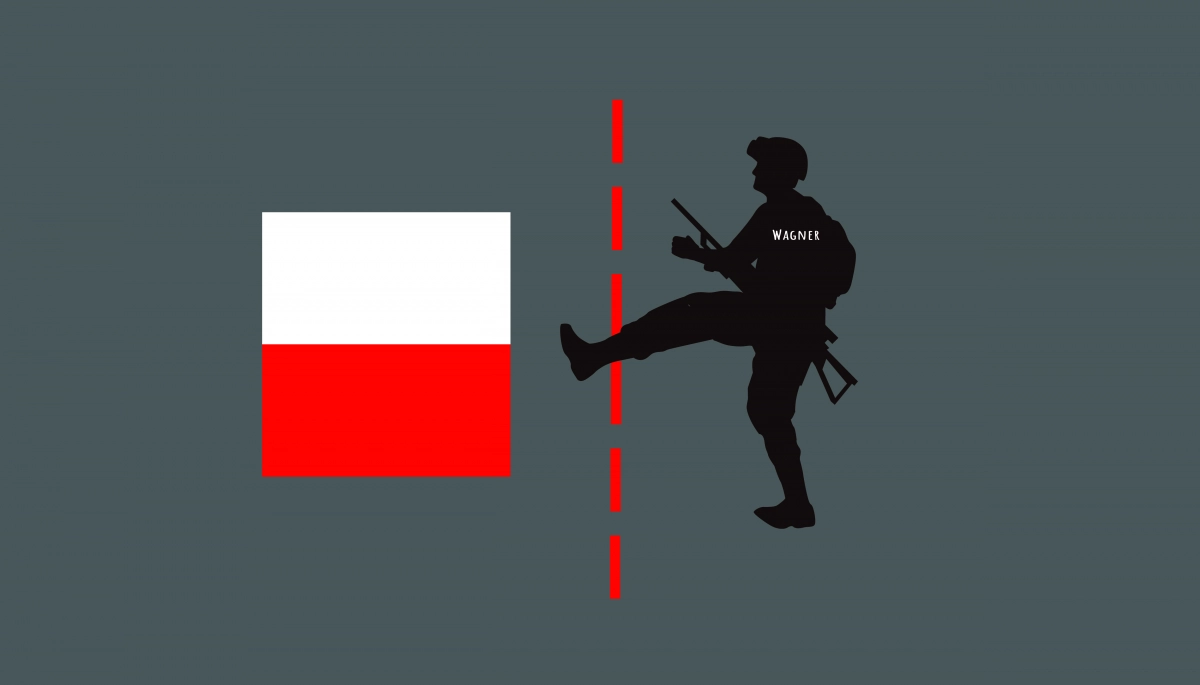Українською читайте тут.
Since February 24, 2022, Detector Media has been monitoring the Ukrainian segment of social networks and the Kremlin media and documenting the chronicle of Russian disinformation about Russia’s war against Ukraine on a daily basis. Over time, we started making regular reviews. Read the latest ones here: May 29-June 4, June 5-11, June 12-18, June 19-25, June 26-July 2, July 3-9, July 10-16, July 17-23, July 24-30, July 31-August 5, August 7-12, and August 14-19. In addition, check out the ten-month summary, as well as an overview of the most ridiculous fakes published during the first year of the full-scale war.
From August 21 to 27, 2023, we documented over 30 instances of disinformation efforts. In this period, Russian propagandists claimed that “decision-making centers” were located throughout Ukraine, and the invading forces were solely targeting military installations, including NATO headquarters. Additionally, they portrayed Ukrainian officials as purportedly pursuing fresh arms supplies from Israel, even going as far as “attacking” Hasidim in Uman.
“Countless NATO Headquarters in Ukraine”
Last week, anonymous Telegram channels broadcasting pro-Kremlin propaganda spread a fake news story that on August 19, 2023, Russians attacked a gathering of Lithuanian and Polish NATO officers in Chernihiv. This is how they explained themselves: “In fact, on August 19, there were talks between the Armed Forces of Ukraine and NATO officers in Chernihiv. No civilians were injured in the attack on the NATO headquarters.” They claimed that only “decision-making centers” were damaged in the August shelling of Chernihiv.
In fact, on August 19, 2023, a terrorist attack on Chernihiv took place. On that day, the Russian invaders hit the city center with a ballistic missile, destroying the Drama Theater building. On that day, citizens were invited to a drone exhibition that was being held in the theater. As a result of the attack, seven people were killed, and 181 people were injured, including 15 children. In addition, 16 people had to undergo urgent surgery.
Russia is trying to disguise its criminal actions against Ukrainians by employing the term “decision-making centers,” describing them as legitimate military targets. However, Russian missiles and drones hit not military but civilian facilities and infrastructure. In addition, any attack on another country, even against military targets, is a crime. That is, as in previous terrorist attacks, Moscow is simply seeking to justify its crimes.
Read more about the chronology of Russian shelling since the beginning of 2023 here.
However, the baseless Russian propaganda about “shelling of military targets” exists not only to distort reality and promote its version of events on the Internet but also to play into narratives about the West’s fight against Russia. Indeed, in many cases, anonymous Telegrams mostly refer to “military facilities” allegedly created with the direct involvement of NATO or other Western partners of Ukraine. According to these reports, the West is creating such facilities on the territory of Ukraine en masse to fight against Russia. President Zelenskyy is “dragging” NATO into a war, which will supposedly lead to the collapse of the North Atlantic Treaty Alliance. After all, Russia is allegedly successfully destroying all those “headquarters” that are actually civilian facilities. In this way, propagandists seek to diminish the role of Ukraine as a sovereign state that successfully resists Russian aggression. Their excuse for the dragged-out war is that they are fighting not only against Ukraine but also against all the evil in the world.
Read what propagandists wrote about the shelling of Chernihiv in our overview.
“Water and Gas for Conscripts!”
In recent developments, pro-Russian Telegram channels disseminated a fake that in Ternopil, conscripts were coerced with the threat of water and gas disconnection if they failed to appear at the local military enlistment offices. Reportedly, to substantiate this claim, the propagandists furnished the posts with a photo of a supposed “warning letter” a potential recruit received. This letter was purportedly signed by the local leader of a utility company and was allegedly issued by the regional military recruitment center. The creators of this hoax maintained that the official acted within the boundaries of his authority, adhering to the law “On Mobilization Preparation and Mobilization.”
Nevertheless, representatives from the Ternopil military enlistment office denied the legitimacy of the document, highlighting that regional enlistment offices are not in charge of distributing mobilization notifications and thus could not have dispatched a letter of this nature to the conscript. This responsibility falls under the purview of city and district offices. Essentially, the document is a counterfeit, probably fabricated through the use of photo editing software. Furthermore, the notification letter showcases grammatical and stylistic inaccuracies, including the misuse of the phrase “according to,” which was written according to Russian language usage instead of Ukrainian.
We wish to underscore that the law “On Mobilization Preparation and Mobilization” does not authorize the imposition of penalties such as water and gas cutoffs on conscripts.
Utilizing this form of rhetoric serves the interests of the Russian propaganda machine, principally with the aim to frighten the Ukrainian society into believing a mass mobilization is underway. Supposedly, the ranks have thinned to the point that Ukrainian authorities have resorted to deceitful tactics and are formulating new legislation.
Russian propagandists have previously disseminated fictitious reports concerning the conscription of women, expecting mothers, minors, students, and even dogs. More recently, these propagandists have claimed that the EU allegedly devised a strategy to extradite Ukrainian refugees of military age back to Ukraine.
Discover the actual strategies Russia is employing to mobilize its resources, cloaking its actions under the newspeak term of “partial mobilization”.
“Wagner on the Outskirts of Poland”
Midweek, anonymous Telegram channels broadcasting pro-Kremlin propaganda, shared an image of an alleged member of the Wagner PMC, an entity labeled as an international criminal organization by the Verkhovna Rada of Ukraine. This image depicted the “fighter” ostensibly stationed at the Poland border, with the anonymous sources asserting, “Nothing will stop the Russians”.
However, in truth, the image was altered using photo editing software. The individuals behind this propaganda campaign took a photograph of an actual Polish soldier and altered it by adding a Wagner PMC patch and a Russian flag to the uniform. This fraudulent representation was confirmed to be a hoax by Stanisław Żaryn, the Polish Government Plenipotentiary for the Security of Information Space, who noted that the doctored photo was devised to incite panic amongst the populace.
In light of recent reports regarding the demise of Prigozhin, the head of the Wagner PMC, Russian agitprop has intensified its focus on the terrorist group, endeavoring to portray that even in the absence of its leader, the organization remains potent and capable of infiltrating a NATO country, thus employing intimidation tactics.
For more information on the purported death of Wagner’s leader, Prigozhin, read here.
Currently, the Kremlin is making strides to conceal its missteps, specifically those pertaining to the apparent rebellion led by Prigozhin, and is asserting that the Wagner group is keen to align with governmental forces. These maneuvers by Russian propagandists aim to craft a narrative of Putin’s exaggerated omnipotence. It implies that he possesses the ability to execute what the presumably deceased Prigozhin could not: orchestrate a provocation within one of the North Atlantic Alliance nations.
In this ongoing narrative, Russia attempts to uphold a façade of the terrorist organization’s unblemished reputation, omitting the leader. Moreover, efforts are underway to bolster support for Putin domestically by juxtaposing the actions of the Wagner PMC with those of the Russian dictator.
“How Does Ukraine Really Beg for Weapons?”
As the week came to a close, Russian media platforms broadcasting pro-Kremlin narratives spread disinformation claiming that Ukraine intended to attack Hasidic visitors in Uman as a strategy to secure an Israeli air defense system. These outlets contended that Ukraine was ridiculing foreigners or even its own citizens of different faiths as a tactic to acquire new weapons. The assertions were supposedly based on an interview with Ukraine’s Ambassador to Israel, Yevhen Korniychuk.
Contrarily, in an interview with a Ukrainian media outlet, Yevhen Korniychuk clarified that it was Russia that might instigate provocations targeting Hasidic pilgrims visiting Ukraine during the holidays. This potential threat was the basis for Ukraine’s request to Israel for air defense systems to safeguard the civilians. Nonetheless, the Russian media twisted the ambassador’s statements, alleging that it was Kyiv orchestrating a scheme against the Hasidim instead of protecting them from potential provocations.
The Russian propaganda machine is known to employ mirroring tactics, a method utilized to justify its crimes by, for instance, asserting that attacks were orchestrated by Ukraine, absolving Moscow of any involvement, even in instances involving terrorist attacks on civilian targets.
These attempts are aimed at demonizing Ukraine and are coupled with efforts to foster a distorted perception of the nation among allied countries. This kind of rhetoric was previously used by anonymous Telegram channels, particularly during the visits of international politicians to Ukraine. During those instances, Russian propaganda consistently promoted the narrative that the concerns voiced in Ukraine were fabricated, mere ploys to unsettle foreign visitors and secure more arms supplies.
Furthermore, Russia is keen on fostering discord between Ukraine and Israel, trying to deter Hasidic groups from undertaking pilgrimages to Ukraine. Despite the conflict last year, several hundred pilgrims were able to visit Uman. Currently, preparations are underway in the city to welcome the pilgrims once again.



